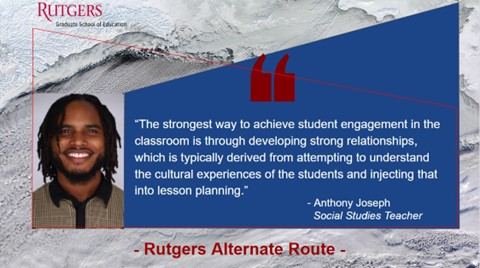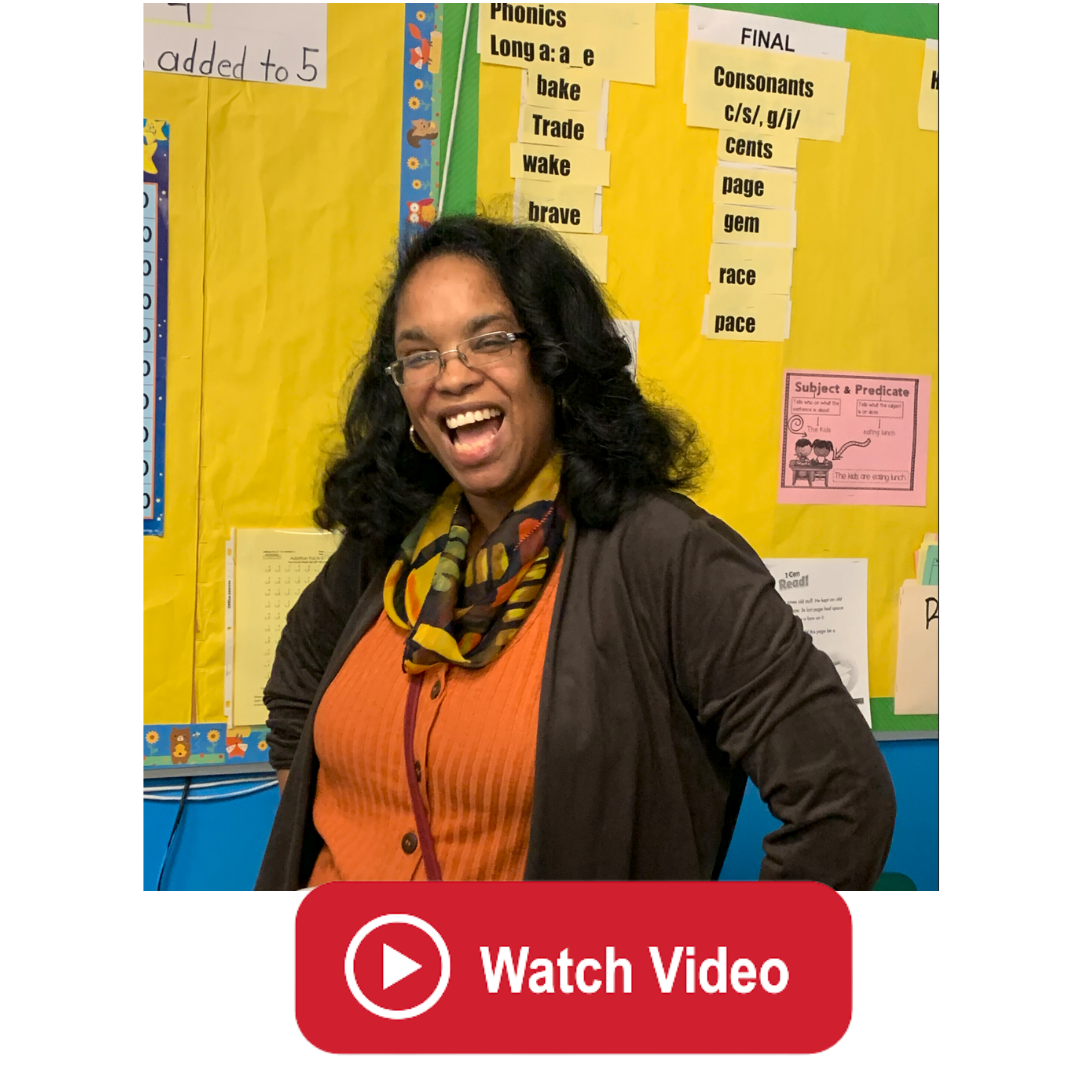Embracing Cultural Competence and the Nurtured Heart Approach in a K-12 Setting

As a first-year teacher, I am constantly learning and evolving my approach to classroom management and student engagement. I recently began exploring the concepts of cultural competency and The Nurtured Heart Approach, seeking insights that could address the challenges I've encountered in my classroom. This blog illuminates some of the resulting shifts in my perception and teaching practice.
While I may share the same ethnic background as some of my students, I still fail to totally identify with their experience as people, for my upbringing and surroundings were much different from theirs in Camden. Their reaction to the curriculum confirmed as much, as they are largely uninterested in the content we learn because of their perceived distance from the topics at hand. Furthermore, many of my students speak Spanish, with some of them having it as their first language, creating a language barrier as well. These problems create considerable distance for my students, making it difficult for them to relate to the content that I am teaching.
Motivated by my students’ low level of engagement during instructional time, I turned to research, taking the opportunity to conduct a deep dive into cultural competency and The Nurtured Heart Approach in a K-12 setting. My students’ general lack of excitement for the content in our curriculum and negative behaviors warrant a different approach, so I tried to search for bodies of text that prescribed a different way forward. In short, both areas of focus—cultural competency and The Nurtured Heart Approach--emphasize one idea: be intentional in the approach.
Cultural Competency
To effectively engage students, we must first cultivate strong relationships with them, which stems from comprehending their cultural experiences and incorporating them into our lesson plans.
How Schools and Teachers Can Get Better at Cultural Competence, one of the articles I read on cultural competence by Camden’s own George Farmer emphasized intent in approach by examining the environment and culture in which the students live. The strongest way to achieve student engagement in the classroom is through developing strong relationships, which is typically derived from attempting to understand the cultural experiences of the students and injecting that into lesson planning. Teachers must consider the values and nuances that make up the communities of their students to be effective. Including their cultural nuances in a lesson can improve student reactions to assignments, as they can see themselves within the content more clearly.

Practicing Cultural Competency for Culturally Relevant Teaching
Recognizing the importance of cultural competency, I identified two quick adjustments I could implement: open-ended learning and local history exploration.
Reflecting on my personal competency began to stimulate ideas of how I can attempt to swiftly include more culturally relevant content into my lesson planning. For example, I realized that I could begin to incorporate diverse content into lessons. I could also make the learning experience more open-ended, focusing on what historical topics they would be interested in learning instead of dragging out content. I could also take time to learn about the history of Camden and their neighborhood specifically, so the students can see the living history around them. These two quick incorporations must be followed through with constant effort, and I anticipate that their inclusion into my lesson planning can increase the cultural relevancy of instruction significantly.
Using The Nurtured Heart Approach to Positively Influence Behavior
The Nurtured Heart Approach (NHA) advocates for focusing on positive behaviors rather than solely reacting to negative ones and inadvertently reinforcing misbehavior.
The Nurtured Heart Approach seemed perfect for students like mine who experience negative reactions frequently and need sculpting centered around positive interactions in their daily encounters. Essentially, the approach asks the teachers, mentors, and parents to focus on the positive behaviors we see rather than the negative behaviors. It requires teachers to adopt an “absolutely no” mindset which means to give the negative as little energy as possible when correcting a child. The students in our classrooms who exhibit the most negative behaviors need this treatment the most, as they typically act negatively as part of attention-seeking behavior. Showing them an animated response in reaction to negative behaviors may signal to them that those behaviors are acceptable. This is why the approach emphasizes an “absolutely yes” mindset, which means praising the positive behaviors students exhibit, even if they are the most minute positive behaviors. Putting energy towards the responses to positive behaviors teaches students what gets the attention they crave in a positive frame.
Nurturing a Positive Classroom
To foster a positive classroom environment, teachers need an "Absolutely yes" mindset and positive behavior rewards.
As a first-year teacher, I am constantly learning how to manage my classroom and make it as stable as possible, which is even more so a challenge because of the effects of the pandemic. However, I want to do my best to double down on this idea of positive behavior rewarding in my classroom, as I want it to be shaped by positive experiences and not the negative. As Covid-19 restrictions are reduced, I would like to reintroduce rewards to my students in the classroom. Students that I think are exhibiting great characteristics will get something from the local delicatessen like a sponsored lunch of some sort. I think doing things like this to reward positive behaviors is the best way to motivate students to engage with the classroom and one another positively. While this is only one idea, this can go a long way in demonstrating to the students the benefits of behaving positively.
Conclusion
Both cultural competency and The Nurtured Heart Approach emphasize the significance of intentionality in our interactions with students. By incorporating these approaches into my classroom, I aim to create a more inclusive and positive learning environment for all students. They both emphasize intent in approach. I certainly intend to implement these quick adjustments to my classroom to make my classroom management more successful and encourage more positive behavior. Especially in these precarious times, it is important to do our best to relate to our students’ stories and struggles and offer our learning environments as a safe refuge shaped by positive reinforcement rather than negative reactions.
If you’re considering following your dream of teaching, Rutgers Alternate Route can offer you the support and training you need to succeed. Be sure to follow Rutgers Alternate Route on Twitter and sign up for Alternate Route’s monthly newsletter for more information and stories from the field of education.

 Anthony Joseph taught Social Studies in New Jersey at Camden Promise Charter School as a Teach For America corps member. An International/Global Studies major in college, Anthony used his passion for history and contemporary world affairs to pursue a career in teaching through Rutgers Alternate Route. The College of William & Mary graduate currently works for his alma mater and remains committed to helping future generations develop awareness of historical and current events while also influencing their lives in various ways beyond the classroom.
Anthony Joseph taught Social Studies in New Jersey at Camden Promise Charter School as a Teach For America corps member. An International/Global Studies major in college, Anthony used his passion for history and contemporary world affairs to pursue a career in teaching through Rutgers Alternate Route. The College of William & Mary graduate currently works for his alma mater and remains committed to helping future generations develop awareness of historical and current events while also influencing their lives in various ways beyond the classroom.





